BLOG
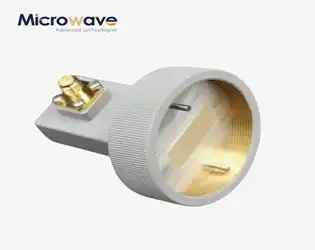
Can the Right Waveguide Adapter Improve Signal Transmission?
August 7, 2025
In today's rapidly evolving telecommunications and microwave technology landscape, the quality of signal transmission can make or break system performance. One critical component that often determines the success of microwave and RF systems is the waveguide adapter. The right Waveguide Adapter can dramatically improve signal transmission by minimizing losses, reducing reflections, and ensuring seamless connectivity between different transmission media. These precision-engineered components serve as essential bridges in complex communication systems, enabling efficient power transfer while maintaining signal integrity across diverse frequency ranges. From satellite communications to radar systems, the selection and implementation of appropriate waveguide adapters directly impacts system reliability, performance metrics, and overall operational efficiency in mission-critical applications.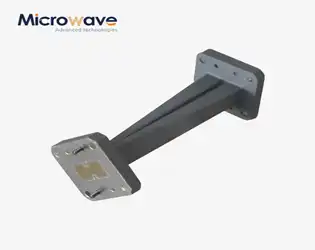
Double Ridge Twist Waveguide for High-Power Applications Explained
August 6, 2025
In the demanding world of high-power microwave applications, Double Ridge Twist Waveguide technology stands as a cornerstone solution for engineers seeking optimal signal transmission and polarization control. This advanced component represents a significant evolution in waveguide design, specifically engineered to handle the rigorous demands of high-power applications while maintaining exceptional signal integrity. The Double Ridge Twist Waveguide combines the benefits of traditional ridge waveguides with innovative twist configurations, creating a versatile solution that addresses complex routing requirements in space-constrained environments. Understanding its capabilities, applications, and technical specifications becomes crucial for professionals working in satellite communications, defense systems, and aerospace applications where reliable high-power signal transmission is non-negotiable.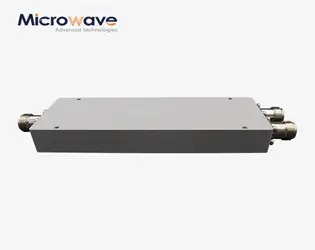
2025 Guide: Best Coaxial Power Divider for High-Power Applications
August 6, 2025
In the rapidly evolving landscape of microwave technology and RF communications, selecting the optimal Coaxial Power Divider for high-power applications has become increasingly critical for engineers and system designers. This comprehensive 2025 guide explores the latest advancements in coaxial power division technology, addressing the growing demands for enhanced performance, reliability, and efficiency in modern communication systems. With frequency requirements extending into millimeter-wave ranges and power handling capabilities reaching new heights, understanding the intricacies of coaxial power dividers is essential for achieving optimal system performance across satellite communications, defense applications, and advanced telecommunications infrastructure.
Boosting Your RF System with a Custom Waveguide H Bend
August 6, 2025
In the rapidly evolving landscape of microwave technology, achieving optimal signal transmission while maintaining system flexibility remains a critical challenge for engineers and system designers. The Waveguide H Bend emerges as an indispensable component that addresses these challenges by providing precise directional changes in waveguide systems without compromising signal integrity. This specialized component enables RF systems to navigate complex routing requirements while maintaining exceptional performance standards across diverse applications spanning satellite communications, aerospace defense systems, and telecommunications infrastructure. Understanding how a custom Waveguide H Bend can enhance your RF system performance is essential for maximizing efficiency, minimizing signal loss, and ensuring reliable operation in demanding environments where precision and reliability are paramount.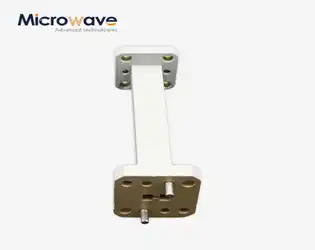
What Is a Double Ridge Waveguide Transition Used For?
August 5, 2025
Double Ridge Waveguide Transitions represent one of the most critical components in modern microwave engineering, serving as sophisticated connectors that enable seamless signal transmission between different waveguide configurations. These precision-engineered components are specifically designed to connect waveguides of varying sizes, types, and configurations while maintaining optimal electromagnetic field propagation characteristics. The unique ridge geometry of these transitions minimizes signal loss and enhances performance across high-frequency applications, making them indispensable in telecommunications, aerospace, defense, and scientific research sectors where reliable signal integrity is paramount.
Boost Signal Precision with High-Quality Waveguide Probe Couplers
August 5, 2025
In today's rapidly evolving microwave and RF technology landscape, achieving optimal signal precision has become paramount for industries ranging from telecommunications to aerospace. The Waveguide Probe Coupler stands as a critical component that enables engineers and system designers to monitor, measure, and control signal flow with unprecedented accuracy. These sophisticated devices serve as the bridge between complex waveguide systems and measurement equipment, ensuring that signal integrity remains uncompromised throughout transmission pathways. As modern applications demand higher frequencies and tighter tolerances, the role of high-quality waveguide probe couplers becomes increasingly vital for maintaining system performance and reliability across diverse operational environments.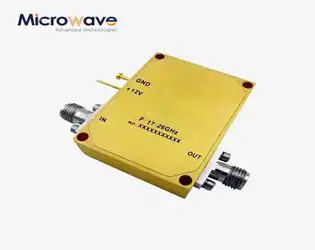
Can a Low Phase Noise Amplifier Reduce Signal Jitter?
August 5, 2025
In the rapidly evolving world of microwave technology and high-frequency communications, signal integrity remains paramount for achieving optimal system performance. Engineers and system designers frequently encounter the persistent challenge of signal jitter, which can significantly degrade the quality and reliability of electronic systems. The question of whether a Low Phase Noise Amplifier can effectively reduce signal jitter has become increasingly critical as applications demand higher precision and stability. This comprehensive analysis explores the intricate relationship between phase noise and jitter, examining how advanced amplification technologies can serve as effective solutions for maintaining signal fidelity in demanding applications across satellite communications, aerospace, defense, and telecommunications sectors. The answer to whether a Low Phase Noise Amplifier can reduce signal jitter is definitively yes. Signal jitter, which manifests as unwanted timing variations in digital signals, is directly correlated with phase noise in the frequency domain. Advanced Microwave Technologies' Low Phase Noise Amplifier portfolio addresses this critical issue by delivering exceptional phase noise performance, achieving levels as low as -165 dBc/Hz at a 10 kHz offset. These amplifiers operate across a broad frequency spectrum from DC to 40 GHz, covering UHF, L, S, C, X, Ku, and K bands, making them ideal for applications requiring minimized phase noise and jitter reduction in both local oscillator networks and receiver chains.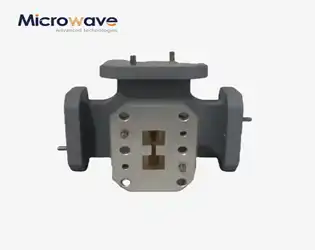
Double-Ridged Waveguide Magic Tee: Frequency Range up to 40 GHz Explained
August 4, 2025
The Double-Ridged Waveguide Magic Tee represents a pinnacle of microwave engineering, offering unparalleled signal distribution and combining capabilities across an extensive frequency spectrum. This sophisticated component serves as a critical junction in high-frequency applications, enabling precise power splitting and synthesis with minimal loss characteristics. Operating effectively up to 40 GHz and beyond, the Double-Ridged Waveguide Magic Tee demonstrates superior performance in demanding environments where signal integrity and reliability are paramount. Its unique dual-ridge architecture enhances bandwidth capabilities while maintaining exceptional isolation between ports, making it an indispensable tool for modern microwave systems in aerospace, defense, and telecommunications sectors.




